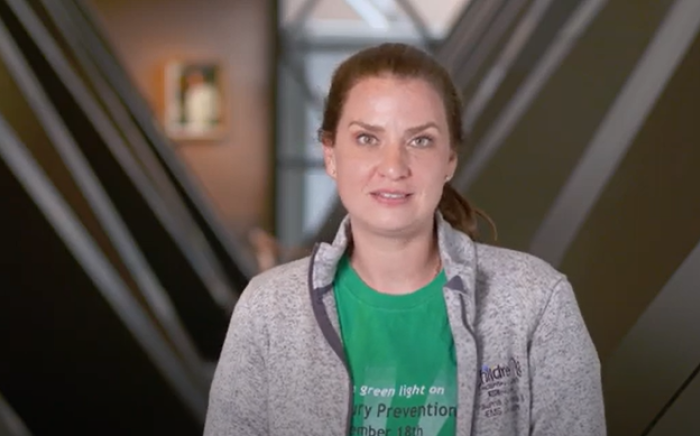Proton Beam Therapy
 Proton beam therapy is a powerful and accurate tool in treating pediatric tumors that produces fewer adverse side effects.
Proton beam therapy is a powerful and accurate tool in treating pediatric tumors that produces fewer adverse side effects.
St. Louis Children’s Hospital, in partnership with the Siteman Cancer Center and Washington University School of Medicine, offers this treatment, which is available at only a handful of centers nationwide.
What is proton therapy?
Proton therapy is a highly accurate form of radiation therapy used to treat tumors near vital organs like the spine, brain, heart and eye in adult and pediatric patients.
Protons target tumors with greater precision because the depth of the radiation can be adjusted, thus avoiding exposing other organs and healthy tissue.
Who can benefit?
Children with brain tumors, eye tumors and malignancies of the neck are potential candidates for proton beam therapy. So are patients with inoperable tumors that are particularly close to sensitive areas, such as the eyes, brain, spinal cord or other vital organs.
Children requiring conformal radiation treatments to the brain as well as those children requiring craniospinal radiation may benefit from the ability of proton therapy to decrease radiation dose to normal surrounding tissues. In addition, children with tumors of the eye, sinuses, nasopharynx or neck may also be candidates for proton therapy. In certain cases, proton therapy can also be utilized in the treatment of tumors located in the thorax, spine, extremity and pelvis.
This therapy offers new ways to treat many types of pediatric cancers, such as:
Pediatric Brain Tumors
- Astrocytomas
- Ependymomas
- Medulloblastomas
- Craniopharyngiomas
- Germinomas of the Central Nervous System
Pediatric Solid Tumors
- Lymphomas
- Rhabdomyosarcomas
- Bone and Soft Tissue Sarcomas
Why choose proton beam therapy?
The S. Lee Kling Proton Therapy Center utilizes the Mevion S250™ Proton Therapy System, a superconducting synchrocyclotron proton accelerator. This system is much more compact than most proton treatment machines and this allows us to house the proton therapy system on our medical campus with direct access to St. Louis Children’s Hospital. This makes treatment more convenient for our patients whether they are inpatient or outpatient.
Proton beam therapy's main advantage is that it allows for the control of the depth, shape and amount of radiation dose. In other external radiation therapies, radiation beams pass through a patient to a defined location and then exit the body on the other side, leaving deposits of radiation along its path. Because proton radiation therapy allows for depth control, most radiation is held until the proton beams hit the precise area targeted. Little to no radiation is delivered past the tumor.
Other forms of radiation often affect healthy tissue surrounding a tumor, causing side effects and unnecessary tissue damage. In contrast, proton radiation treatment can be designed so the radiation is delivered at the precise site of the cancer or benign tumor, minimizing damage to the rest of the body.
What to expect
If it's determined that proton beam therapy is appropriate for your child, here's what to expect:
- Your physician will explain how proton beam therapy can benefit your child
- You'll be introduced to your treatment team
- All your questions will be answered
- CT scans or X-rays will be obtained to help map out the location of the tumor
- Most patients only receive one treatment per day, Monday through Friday
- Treatments can last 20 minutes
- After treatment, your child's progress will be tracked, and your concerns will be addressed















